Prologue
Our story began on April 7, 2021, when my brother’s mother-in-law died due to COVID-19. She was a very active barangay health worker. Friday before Holy Week of 2021, she went around her barangay handing out stuff, and then joined her family at a daughter’s house in Bulacan. My brother and his family did not join.
Back then, not joining was a blessing in disguise, as most of the family got COVID, but the mother-in-law went critical. She had the red flag symptoms – slept a lot, new confusion – and needed medical attention. She was rushed to Caloocan South Medical Center last April 7, and like many others was placed under a tent, as the hospital was full. She died under that tent, like many others who were unlucky, victims of a government that was vastly and woefully unprepared and grossly indifferent.
When she died, they were unsure if it was due to COVID. She had to get tested after death, and to add more insult the family had to find someone to do the test – I dunno if the hospital couldn’t or refused to do the test. The family got her tested the night she died, and the result came out a day later – positive.
She wasn’t cremated immediately; it would take a week, as most crematorium were busy.
View this post on Instagram
My brother and his wife had to witness the cremation, together with another sister who also did not join the family in Bulacan. (Everyone else were quarantined in Bulacan.) The original schedule was 6PM, but due to a mix-up in scheduling by the mortuary, cremation took place at 8PM. As it was ECQ, curfew was at 8PM, so my brother and his wife went home and just viewed the cremation through Facebook.
The beginning
The sister-in-law went out several times since then: for the pasiyam, to look for a columbarium unit (with her sister), to pay for the unit (with her sister), and finally on April 21 to get herself tested as requirement for her to go back to work.
She is the patient zero in our family because she was the first one who tested positive for SARS-Cov2 virus.
She started showing symptoms on April 19, starting with itchy throat. As this was common for cough, she ignored it. Only when her antigen test showed positive did it made sense.
My mom took care of her kids when they went to witness the cremation, and dropped by their house several times before she got tested. When her test result was disclosed, a part of me panicked. My mom was a close contact, and then I am a close contact of my mom.
So the first thing I did was to call the city’s COVID hotline.
I called the first number and it was busy. I called the second number but no one answered. I called the first number again, and this time someone answered. After telling her my concern, she just asked me to note down the numbers of the health center nearby and some barangay health numbers.
Wow. That’s it. The hotline was just a glorified yellow pages.
After that fruitless call, someone did send an SMS using the second number after I called them.
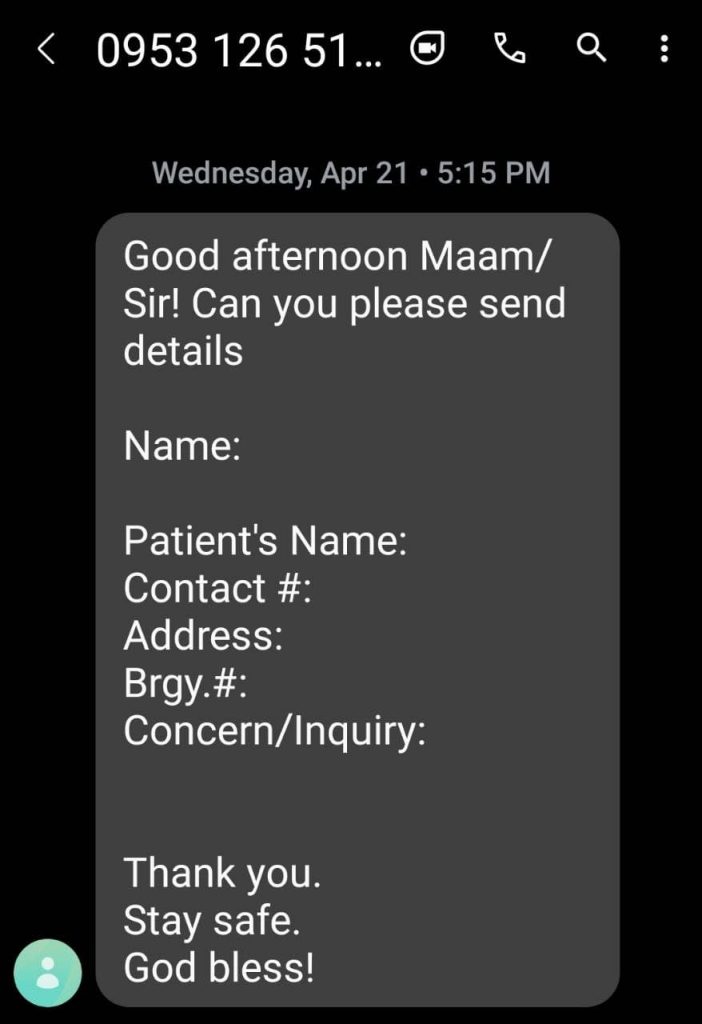
I replied with the required details. Nothing happened. Maybe because it was after office hours? *shrugged*
On the same day, another sister-in-law had low grade fever and itchy throat. We thought it was coincidence, as both sisters-in-law had no close contact at all.
The next day, my brother, husband of second sister-in-law, also had fever. Another coincidence, since they are husband and wife after all, so no big deal.
But the biggest concern was to get everyone tested. In Caloocan, you need to contact a barangay health worker first before you can be scheduled for RT-PCR swab testing. As patient zero’s late mother was a barangay health worker, she managed to contact the health worker assigned to the barangay, and we were scheduled for swab testing the next day, April 23.
The city has “free” RT-PCR testing from Mondays to Fridays (the virus takes a break on weekends), but in reality it is Philhealth who pays for the test. The test sites are at Caloocan People’s Park (for south Caloocan) and Caloocan Sports Complex (for north). In reality, only senior citizens, pregnant women, and persons with disabilities are tested in People’s Park; the majority are bused in to Philippine Sports Stadium mega swabbing site in Ciudad de Victoria, Bocaue, Bulacan.
(The free antigen testing is just recent, after DOH acknowledged that antigen tests are as good as RT-PCR tests. PDF of DOH Memo.)
We were told to be at Caloocan People’s Park by 8AM. The barangay patrol (a tricycle, really) picked us up and brought us to the waiting area.
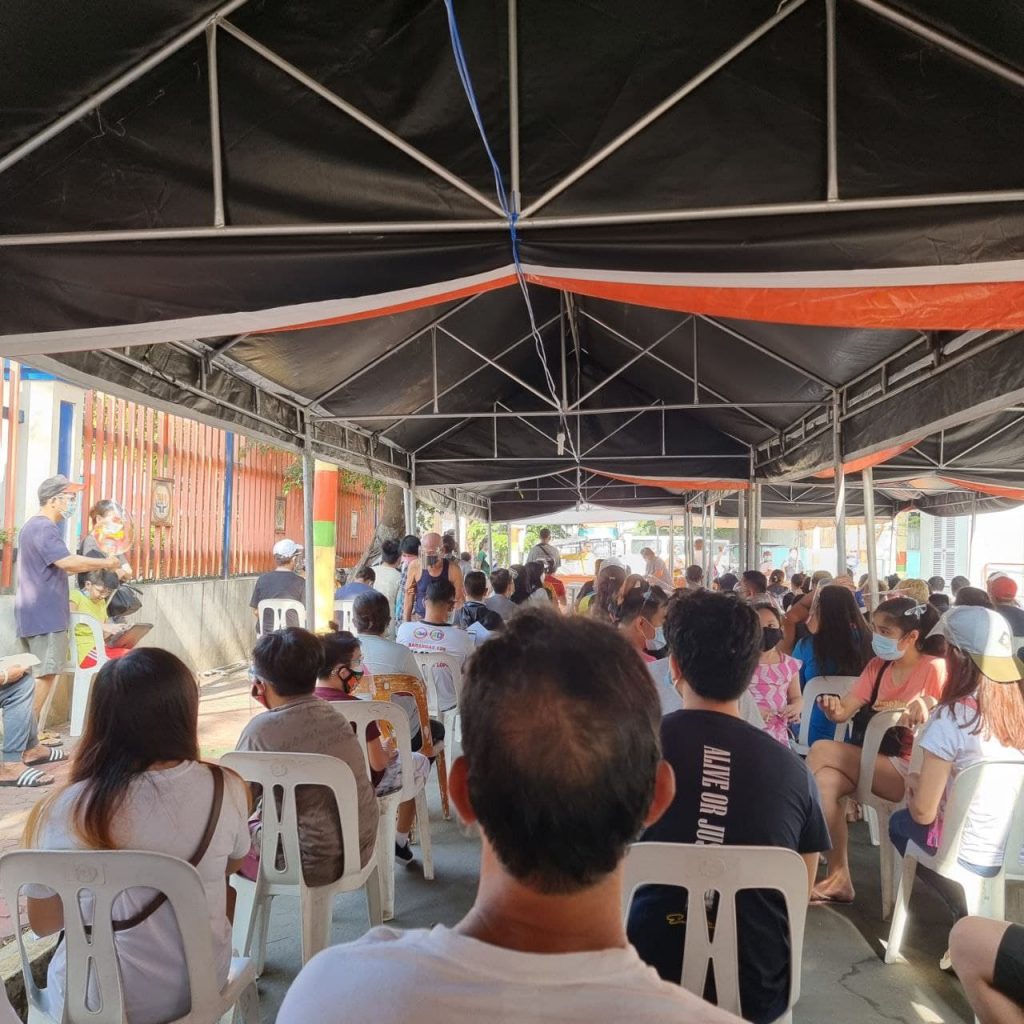
This is the waiting area at the Caloocan People’s Park. No segregation between asymptomatic and symptomatic people. Spacing was not as far as I’d be comfortable with. (If you squint you can see the buses in the background.)
The seniors, pregnant women, and PWDs were asked to move to the left side. Why they weren’t made to sit there in the first place is beyond me. Others were called by batches and made to get on the bus.
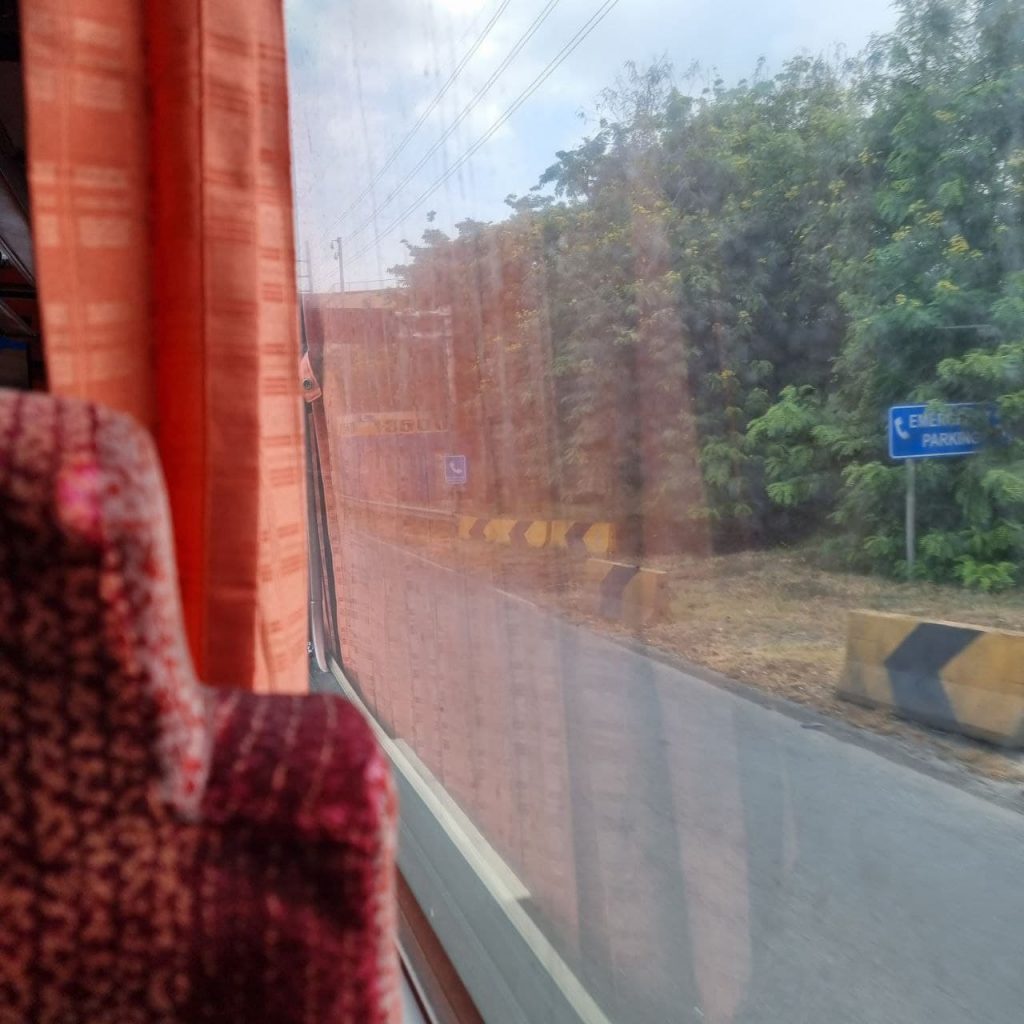
We (me, my brother and his wife; my mother and my youngest brother were tested in People’s Park) arrived at Philippine Sports Stadium at around 9:30 AM. We first stayed in the bus in the parking lot across the street, and then the bus entered the area but we’re made to stay until there was no queue outside the stadium.
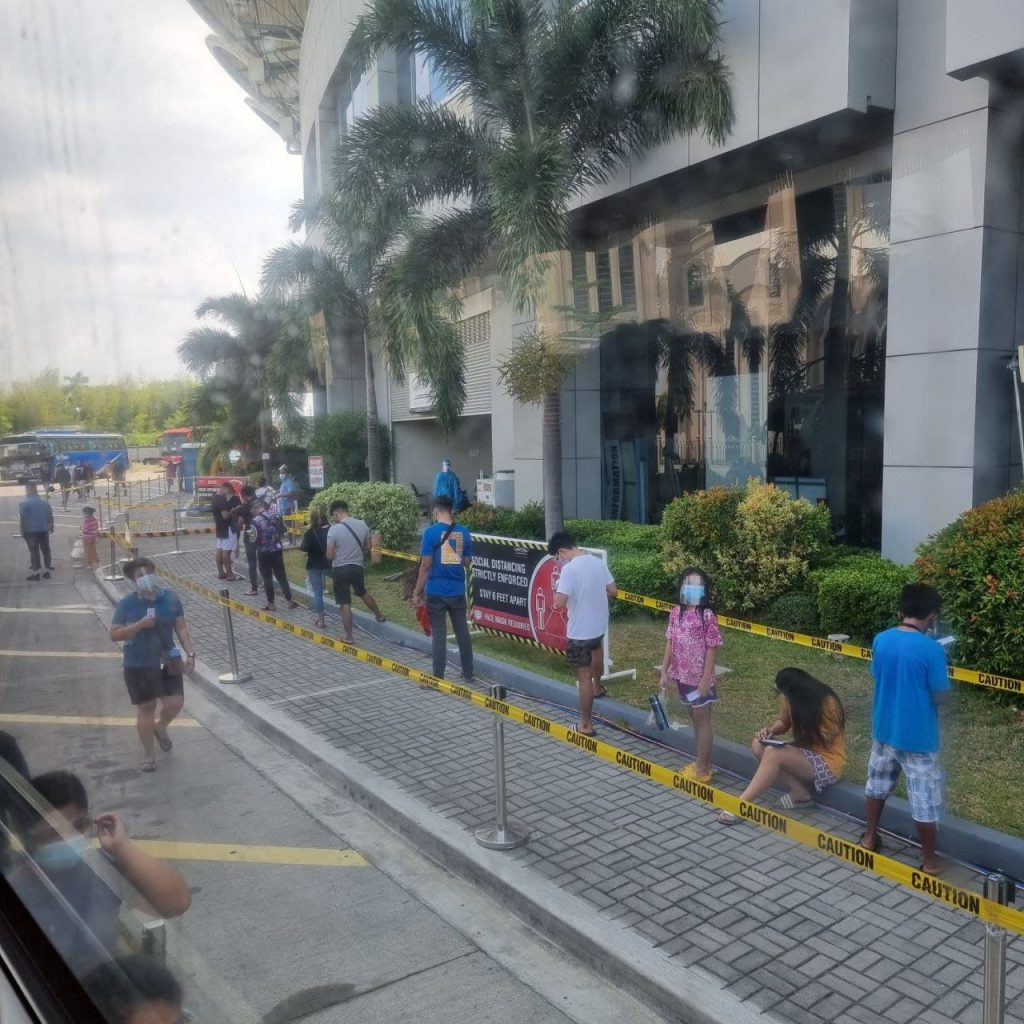
While waiting, we were made to fill up a small slip of paper, indicating our personal details plus the email address of the requesting LGU.
We got off the bus when there was no one in queue. There were five stops: queue outside, sit down at the portal, sit down at tents just outside the testing hall, registration tent, then sample collection.
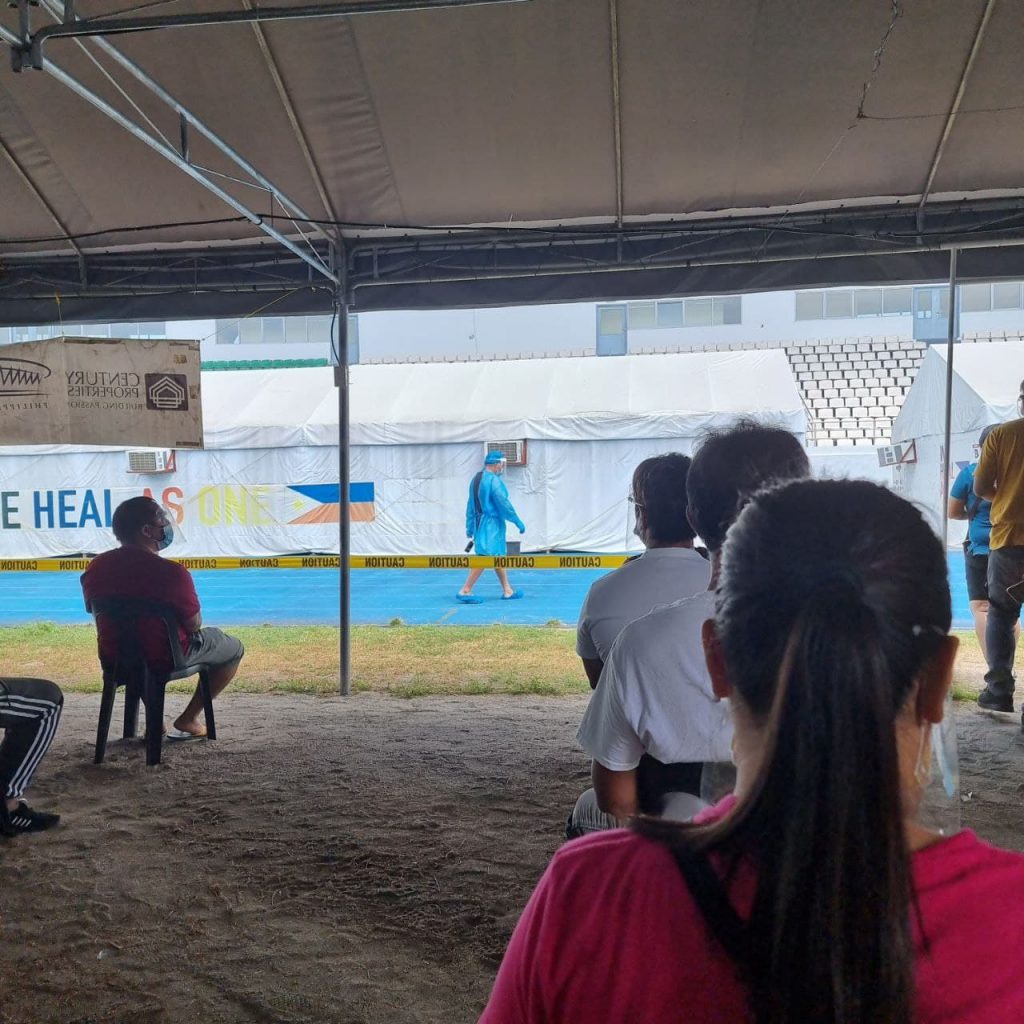
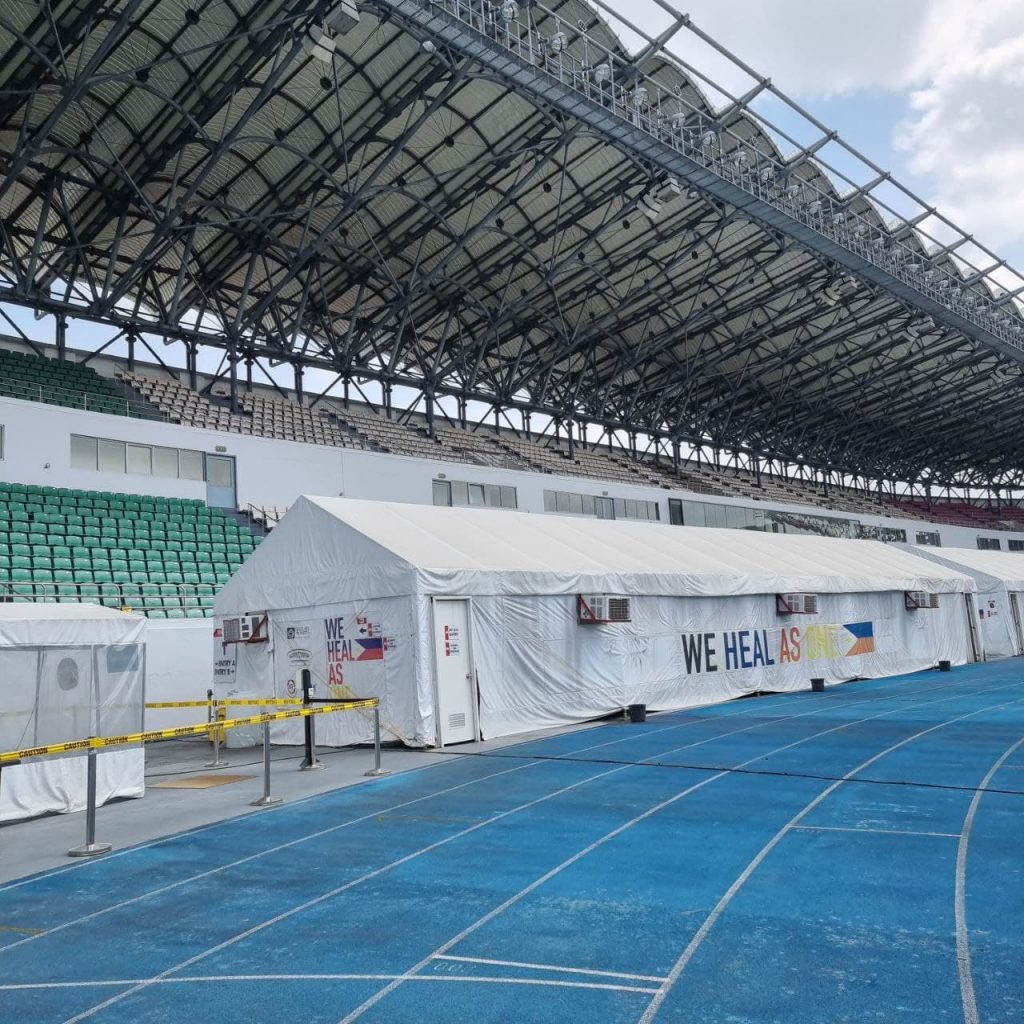
We were done after an hour. We were brought back to People’s Park using the same bus. The atmosphere inside the bus was festive, as there was a large group of people from the same area.
After getting off at People’s Park, we waited for the barangay patrol to pick us up, to make sure we won’t go anywhere. We waited for more than 30 minutes; if we walked we would be home in less than 10.
As it was a Friday, it was an interminable wait – they said results could take 2-5 days. They did not say if calendar or working, but knowing government, it’s working days.
Saturday, April 24, my mom exhibited symptoms. As she’s a senior citizen, this crushed my heart, being a pessimist worrywart. She was still hopeful, thinking she’d be negative, but I know she was already positive.
Monday, April 26, D Day. I found out that it was Red Cross who processed the test. I got my test results online (through this site), and thankfully I tested negative. My brother got his results online as well, but unfortunately he tested positive. His wife tried searching for her test results, but no results were found. I couldn’t find the results for my mom and younger brother as well.
Tuesday, April 27. The barangay health worker (BHW) finally got most of the test results. Unfortunately my fears were validated – my mom tested positive. The health worker asked if we want to have those who tested positive transferred to an isolation facility. I asked where, but the BHW couldn’t provide an answer; they have to file a request first, and only upon approval will they know where.
Look at the above Facebook post from our mayor. Some schools were converted to isolation facilities, and it’s quite possible you will not be alone in a room, and the toilet will most likely be shared. There are other isolation facilities that have individual rooms for each patients, with aircon and toilets for each room. As we cannot be assured we’d get the better rooms, we decided to just quarantine at home.
Each patient contacted the Office of the Vice President’s Bayanihan e-Konsulta project, and all of them got callbacks. All of them got COVID care kits except for patient zero (she called up on the home stretch of her quarantine); only my mom and patient zero got a call from a doctor; and the volunteers tried their best to make followup calls (it’s supposed to be twice a day), but I know they are swamped with cases, and thankfully we only got mild symptoms.
The BHW checked on us twice a day, asking for temps. No questions about oxygen saturation, symptoms, whatever we need. That’s the entire extent of government action on COVID-positive patients.
Fourteen days
It was harrowing and stressful 14 days for me. I had to look after 4 patients and at the same time keep myself safe. I am not a prayerful person, but I relied on prayer every day, praying for better health for everyone.
Every morning I was this:
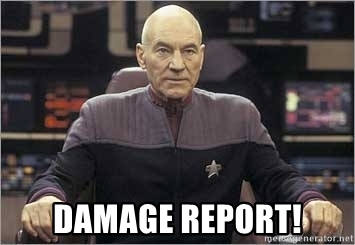
First order of the day was to check on my mom. The constant symptoms were clogged/runny nose and cough. Headaches and fatigue came in on the fourth day since the first onset of symptoms; body pain on the sixth. Every day, every new symptoms, my heart sank deeper and deeper into despair. I check on other patients either virtually or outside their door.
To prevent myself from sinking further into despair, I buried myself into watching Netflix and Viu. I started re-watching The Untamed. I installed and uninstalled mobile games, and settled into EverMerge. I read on articles on how to care for COVID patients and how to keep oneself safe in the process. I prayed like there’s no tomorrow.
We go to the nearby public market every week for a week’s supply of meat and vegetables. After a week, we ran out. Relatives stepped in and bought stuff for us. Even my co-workers chipped in, despite the fact that I am not COVID positive. I was hoping someone from the barangay would step in and volunteer to help us, but I guess that’s asking too much.
We got relief goods on two separate days, total of three packages, and barangay made sure to emphasize goods are courtesy of politician M and politician S. #election2022
As the end of the 14-day quarantine approached, everyone get better until they no longer have symptoms. Amazingly, patient zero’s husband (my brother) and their children presented no symptoms, and the husband tested negative despite being in the same house as patient zero all throughout the quarantine. I guess wearing a mask works (more on this later).
Will StaySafe keep you safe?
With regards to contact tracing: I have no idea how it works. We were never asked where we’ve been for the last 14 days. We were not told to contact people who were in personal contact with us for the last 14 days.
Prior to the test, my mom and I went to the market on April 21, the day patient zero got tested. My mom was already double masking at that time (I made her wear a KN95 mask over a surgical mask since the March 2021 surge started) plus face shield (which I think does not really provide much protection), while I wore a KN95 mask.
We also went to the grocery last April 18. I used the StaySafe app before I entered the grocery. When my mom’s positive test result came in, I checked the app to see how I can report that I was a close contact of a positive case.
So here’s the main page of the app.
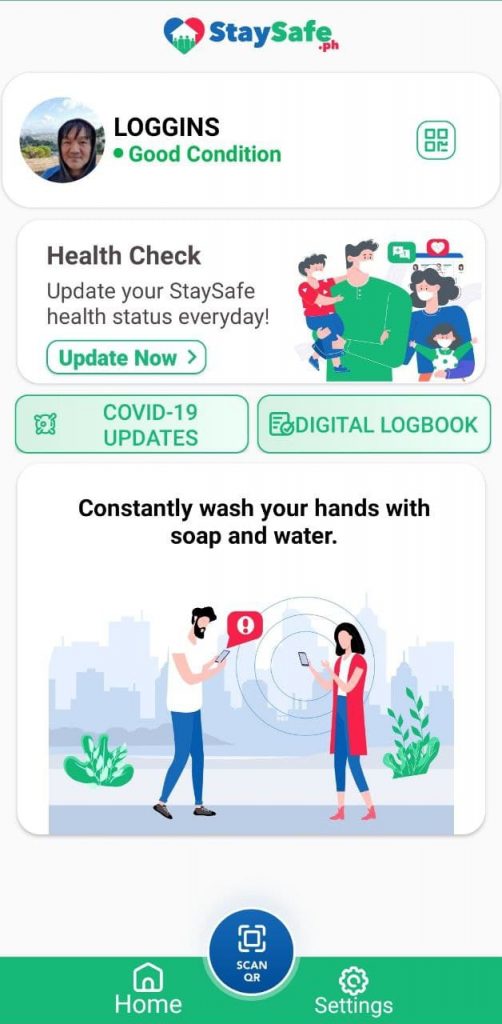
I clicked on Update Now, and I was presented with a list of common COVID-19 symptoms.

As I tested negative and had no symptoms, I selected None of the above then tapped UPDATE.
In the next screen, you are asked several questions.
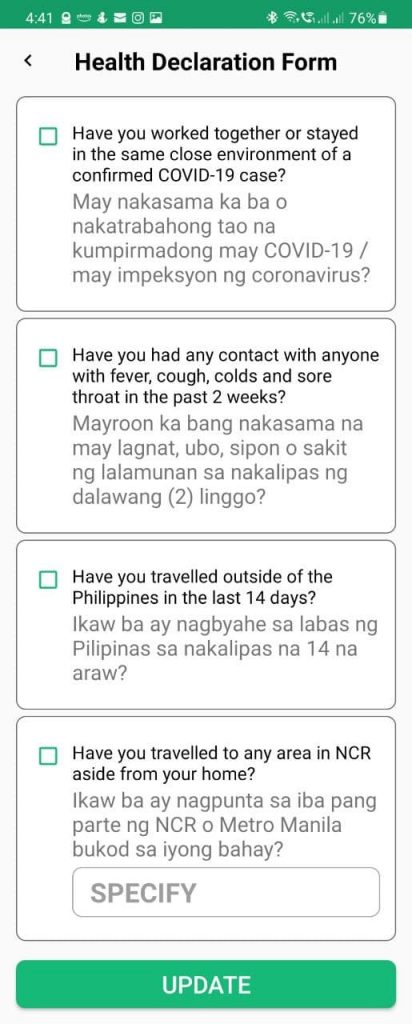
I selected the first two options, then tapped UPDATE.
I was shown the home screen again. I have no idea if the app sent a message to the server to alert other users who were also in the grocery on that day. I have no idea if those people got contacted.
Will the StaySafe app keep you safe? I’ll let the (former?) contact tracing czar speak about the app:
Insofar as the DILG is concerned, nasa study and learning status pa po sila. Yan po yung talagang kulang pa po ang documentation na binigay ng StaySafe kaya hindi pa po natin makumpleto at masabing categorically na highly reliable na po itong StaySafe.
Benjamin Magalong
End of (14) days
Our quarantine started on April 23 (the day we got tested) and ended supposedly last May 6, but we were only told we’re done a day after. We were told to wait for the official certification, to be issued Monday, May 10, but we were free to go out for essential tasks. So off to the market last Saturday, and groceries last Sunday.
Monday came and no paper in sight. Apparently, the health center does not know the contact tracer who processed our case information. They assumed (1) we knew and (2) took a photo of our case info sheet. I only found out today, May 11. Luckily I did, and sent the photo to the BHW. We got our certification today, including certification from health center doctor: for those who tested negative, that we completed 14 days of home quarantine and remained asymptomatic all throughout (I don’t know how they determined that, since they never asked me); for those who tested positive, that they completed 14 days of home quarantine and assumed to have recovered based on DOH Memo 2020-0258 dated May 29, 2020. (PDF of the memo, see page 3, paragraph 9.)
Epilogue
While supposedly those who tested positive for COVID are considered recovered after 14 days of quarantine and no longer require repeat testing, some businesses require a certification from a medical doctor that the person is fit to work, and some even require a negative RT-PCR test. This test costs starting from four thousand pesos – not cheap – and with the patient technically jobless and no pay for 14 days, and got no medical attention, isn’t the barangay certification enough, based on DOH policy? Not all businesses and health maintenance organizations (HMOs) will cover the cost of this extra testing and certification. In short, poor people who got COVID gets poorer because no-work, no-pay, and then will be required by employer to get tested at employee’s expense. This is unfair and unacceptable.
Why can’t DOH amend its policy so that patients can be tested after their quarantine? Why is this regime so stingy when it took out so many foreign loans? Why are they insisting that mass testing = testing everyone? One year into the pandemic, haven’t we built up our testing capability that we need to scrimp and save and deny testing to those who had recovered, when we allow private enterprises to ignore state policy and insist on their own recovery policies? Both public and private sectors are cruel to its citizens and employees.
We are lucky that everyone in the family who tested positive got mild symptoms only. I’d probably go insane if someone got severe symptoms, knowing how stressful it was just caring for patients while trying to keep yourself safe. I don’t understand how government officials remain indifferent when some of them got COVID and at least one of them got critical. Are they really that pathetically uncaring about people who got sick with COVID? Maybe that’s why they are unconcerned about the number of people who died, and even dared to compare our numbers against other countries just to justify their failed response to the pandemic?
We are forever grateful to everyone who helped us – from relatives to friends to co-workers to barangay personnel to those who collected samples. Thank you.
Recommendations
Based on our experience, here are my recommendations for improving our pandemic response on the local level (because nationally it is hopeless).
The city should be more proactive when new cases are reported by residents. I think the hotline should instead call the necessary people instead of the resident making the calls. They can collect the necessary data and forward this data to the right people. If the hotline will just state phone numbers to call, the mayor should revise his pinned post to instead list down the numbers of barangay health centers and health workers instead. That would save residents one phone call.
With regards to the waiting area at the People’s Park, I hope they can sit asymptomatic and symptomatic people separately, and make senior citizens sit directly near the entrance to the park, not to make them sit with other people then ask them to move later. Compare that to the recent OVP Swab Cab testing in Marikina, where in the first photo, the area for symptomatic persons is clearly marked, meaning people without symptoms are separated from people with symptoms. I hope the city can emulate this arrangement.
Our Swab Cabs are in three different areas in Marikina now – Concepcion Uno, Concepcion Dos, and Marikina Heights. pic.twitter.com/YJ1Tg0Numg
— Leni Robredo (@lenirobredo) May 11, 2021
With the just-recent pronouncement by World Health Organization (after a year of overwhelming evidence of its viability as transmission mode) that the SARS-Cov2 virus can be transmitted through the air, I hope the city rethinks busing in people. They can probably hire non-airconditioned buses or make sure asymptomatic people are separated from symptomatic people, or make sure the buses have adequate means of ventilation. We must prevent transmission while being on the bus – it would be highly ironic if you tested negative on that day only to be infected while on the bus and show symptoms later.
There is also an issue in data encoding. For the three of us who got tested at Philippine Sports Stadium, two of us immediately found our test results online. I presented my old SSS ID while my brother presented his driver’s license. His wife presented her unified multipurpose ID (UMID), and the reason she did not find her results online is that whoever encoded her data included the acronym “CRN” in the system, and instead of typing a dash, a semi-colon was entered instead. (For those who are unfamiliar with the UMID, your ID number is presented this way: “CRN-xxxx-xxxxxxx-x”.)
At the People’s Park site, they don’t even encode the ID number at all. No wonder I couldn’t find my mom’s test results online.
I hope that they make sure their data encoding is consistent and checked, to prevent errors. After all, it’s GIGO.
Don’t get me started on contact tracing. This regime can’t even come up with a mediocre contact tracing system. They can’t even have a coherent message on StaySafe – one person says its OK, another to contradict. It’s been a year, and no wonder we had this tragic surge. I have no recommendation about contact tracing – it will take a series of blog posts and systems analysis and design documentation. All I can say is, based on our experience, there’s no contact tracing system. At all.
I know that some barangay health workers (BHWs) and barangay health emergency response team (BHERT) workers are volunteers, but it doesn’t mean they don’t get the right training and proper compensation. The LGU should make sure they are properly equipped to monitor patients in their locality (in case of home quarantine). For example: not all symptomatic people get fever (my mom didn’t), so just monitoring body temperature is not enough. BHWs should also monitor for oxygen saturation. I think oxygen saturation is a better metric to monitor and better indicator if patient requires immediate medical attention or not. (Fever can be managed through medicine, low oxygen saturation is more complicated and requires professional care.)
With family members needing to go out to report to work, it might be necessary to wear a mask when at home until everyone gets vaccinated. It can be expensive, as cloth masks might not effective enough in such close quarters, so I hope the LGUs can help in providing residents surgical masks at least.
The city of Caloocan can improve its health care system, especially its city hospitals. These hospitals should be at least be able to test patients for COVID-19. While the North Medical Center has a molecular biology lab, I hope the South can have its own lab itself. Given the pandemic, the city should allocate more resources to its hospitals so that they can help as many people as possible.
We want patients to eat healthy. While relief goods are appreciated, we should move away from canned goods and instant noodles. I understand we maintain a stockpile of these goods precisely because they last longer, people would appreciate it more if fresh produce and fruits are included. Patients need to build up their immunity, and fruits and vegetables can help. It would also help if the LGUs can maintain a stockpile of common medicines to address COVID-19 symptoms like paracetamol and hexetedine.
LGUs can at least replicate Bayanihan e-Konsulta’s system. Care kit packages go a long way in helping patients, as most of the time they are unprepared in addressing symptoms. And once they are locked down, they can no longer acquire much needed medicines and other resources. I hope every barangay can maintain a volunteer corp that can help in patients’ errands like purchasing medicines or paying bills, especially those who do not have the means to be online.
Hopefully, LGUs can plug the holes that the national government refuses to address. While resources are limited, LGUs can direct volunteers to where they are needed. The emergence of community pantries shows that people will help when they know how and where they can help. With the bayanihan spirit in action, we can help alleviating the difficulties that COVID-10 patients in poor communities face. Let’s help each other, as the national government will not.
And lastly: please, leave politics out of the pandemic response. Be equitable in providing resources, not concentrating help on bailiwicks. Every Caloocan resident should be treated equally. regardless of where they are residing in the city. Thank you.